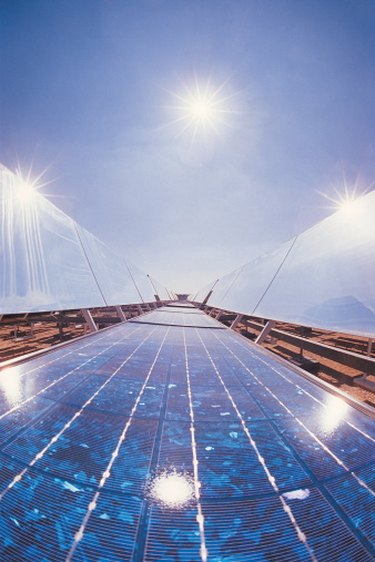
Active solar systems use external equipment to increase the usable heat in a solar energy system. These systems convert heat to energy or use the heat directly to warm water or air in a building. While active solar systems are a good source of energy in many situations, the disadvantages of an active solar system will discourage its use by most homeowners.
Space Requirements
Video of the Day
Active solar systems rely on the sun to heat liquid-whether the liquid is water or an antifreeze mixture. To generate enough hot liquid to be useful, a large space is required. A typical home would require a solar panel as large as its roof to heat enough liquid to serve its heating needs. Because these panels require regular maintenance, are heavy and may leak antifreeze, a roof installation is not ideal.
Video of the Day
Initial Cost
Active solar energy systems are expensive. A complete system for a single-family home can cost upward of $20,000. By comparison, a passive solar system that does not use pumps will cost half as much. In addition, an active solar system has many parts to maintain; repairs can add up quickly.
Dual Systems
Active solar systems have the advantage of storing heat in their liquid even when the sun is not shining. However, in most areas, an active solar system will not capture enough sunlight to entirely replace your heating and electrical systems. Therefore, another system will have to be used as a backup to your active solar system--meaning you will have two systems to maintain.
Limited Use
Because of the related disadvantages, relatively few technicians have experience with active solar systems. As a result, installing an active solar system will either be a do-it-yourself project or extremely expensive. In addition, when your system requires maintenance or repair, you may not have a technician in your area. Active solar systems for home use will be most attractive to hobbyists willing to spend a lot of money for their system.